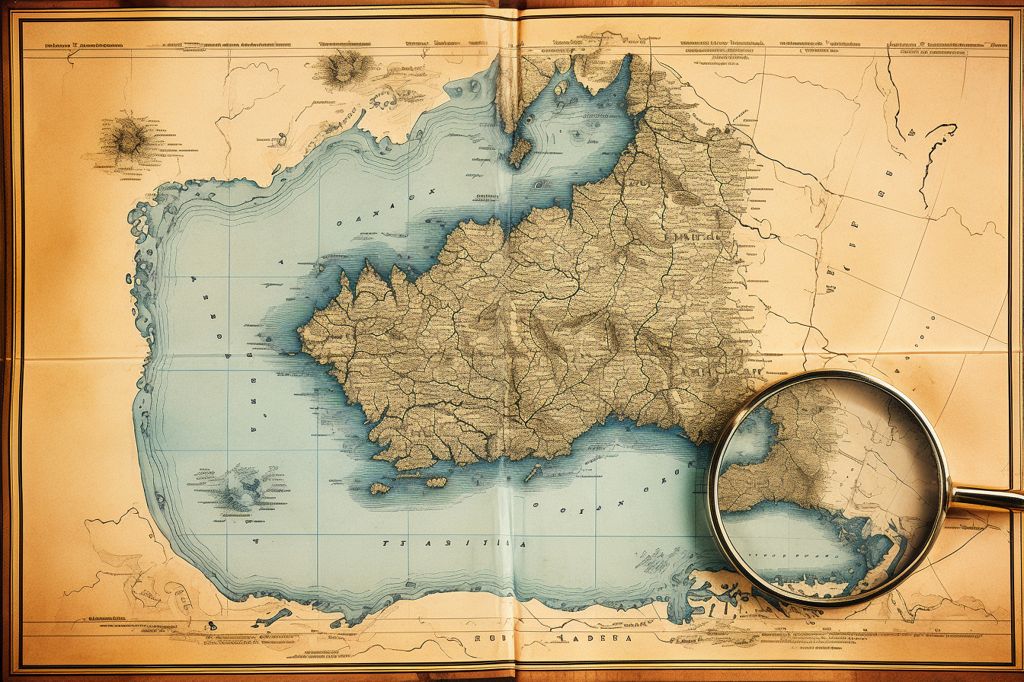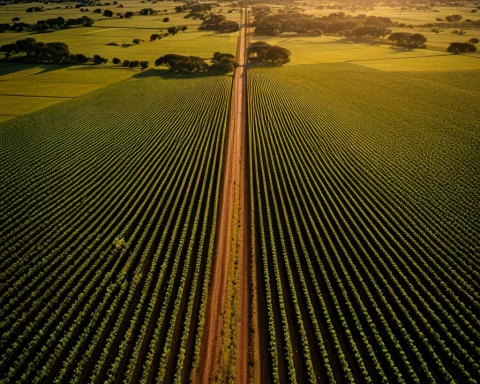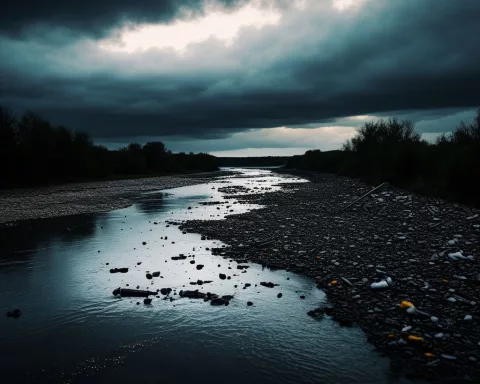Good news for the Western Cape as dam levels have surged due to recent heavy rainfall, providing relief to the area’s prolonged water crisis. The Cape Town System Dams have experienced a significant uptick in water levels, exemplifying the fortitude of the region’s people and natural resources amidst adversity. Despite heavy rainfall causing damage to infrastructure and loss of life and property, the region has remained resilient and adaptive, drawing strength from its diverse heritage and art to overcome challenges and secure a sustainable water future.
A Surge in Dam Levels: Progress and Resilience
Recent heavy rainfall in the Western Cape has provided much-needed relief to the area’s prolonged water crisis. The National Department of Water and Sanitation (DWS) has shared an important update for Western Cape residents, emphasizing the considerable rise in their dam water levels. This uplifting news exemplifies the fortitude of the region’s people and natural resources amidst adversity.
On September 26, 2023, a hydrological report revealed striking advancement throughout the Western Cape dam system. The Cape Town System Dams, encompassing six of the area’s largest dams – Theewaterskloof, Bergriver Dam, Upper and Lower Steebras, Voelvlei, and Wemershoek dams – have experienced a significant uptick in water levels. At 109.38% capacity, this is a substantial improvement compared to the previous year’s 85% during the same period.
Theewaterskloof, the most extensive dam in the province that provides 54% of the region’s water, has achieved full capacity and is now overflowing. Other dams in the Western Cape, including Misverstand Dam, Brandvlei Dam, Ceres Dam, Gamka Dam, Clanwilliam Dam, and Miertjieskraal Dam, have also seen considerable increases in water levels.
Catchment Areas and Infrastructure: A Testament to Adaptability
The Olifants/Doorn River Catchment area has attained an exceptional 100% water yield, up from the previous year’s 86.71%. In addition, the Gouritz River Catchment has risen to over 80%, a significant increase from the previous year’s sub-50% water yield. This joint progress exemplifies the region’s capability to adapt and conquer water scarcity challenges.
Despite the positive evolution in dam water levels, heavy rainfall has resulted in damaged infrastructure and the loss of life and property, especially in riverbank and low-lying regions. The DWS has urged citizens to exercise caution around water resources and facilities, including when crossing low-lying bridges.
The Department has commenced evaluations of the infrastructure, with no immediate reports of extensive water infrastructure damage or gauging stations being swept away. This proactive approach ensures that the region remains prepared for any potential difficulties that may emerge due to natural disasters.
Collaboration has been instrumental in managing the situation, as the DWS has partnered with various stakeholders to monitor developments in the Western Cape’s water infrastructure. This cooperation illustrates the significance of a united effort in addressing water management concerns and safeguarding the well-being of the area’s residents.
Artistic Inspiration and a Sustainable Future
The Western Cape’s progress in water conservation and management can be contextualized within the broader historical and artistic movements shaping the region’s identity. Despite facing water scarcity challenges, its people have remained resilient and adaptive, drawing from their diverse heritage for inspiration and strength. This can be observed in numerous artistic expressions that capture the beauty and power of water, whether through visual arts, literature, or music.
As dam levels in the Western Cape continue to rise, residents can anticipate a future where water scarcity becomes a thing of the past. The region’s artistic and academic communities are likely to remain inspired by this progress, reflecting the triumph of human resilience and adaptability in overcoming adversity.
Nonetheless, it is crucial to recognize that the path to a sustainable water future is a continuous journey. The Western Cape’s recent success in water management serves as an invaluable lesson for other regions facing similar challenges. It demonstrates the power of collective effort, prudent planning, and resilience in surmounting obstacles and securing a brighter future for generations to come.
What is the recent update on dam levels in the Western Cape?
The recent heavy rainfall in the Western Cape has caused a surge in dam levels, providing relief to the area’s prolonged water crisis. The Cape Town System Dams have experienced a significant uptick in water levels, exemplifying the fortitude of the region’s people and natural resources amidst adversity.
Which dams have seen a considerable increase in water levels?
The Cape Town System Dams, encompassing six of the area’s largest dams – Theewaterskloof, Bergriver Dam, Upper and Lower Steebras, Voelvlei, and Wemershoek dams – have experienced a significant uptick in water levels. Theewaterskloof, the most extensive dam in the province that provides 54% of the region’s water, has achieved full capacity and is now overflowing. Other dams in the Western Cape, including Misverstand Dam, Brandvlei Dam, Ceres Dam, Gamka Dam, Clanwilliam Dam, and Miertjieskraal Dam, have also seen considerable increases in water levels.
What is the progress in catchment areas and infrastructure?
The Olifants/Doorn River Catchment area has attained an exceptional 100% water yield, up from the previous year’s 86.71%. In addition, the Gouritz River Catchment has risen to over 80%, a significant increase from the previous year’s sub-50% water yield. However, heavy rainfall has resulted in damaged infrastructure and the loss of life and property, especially in riverbank and low-lying regions.
What is the DWS’s response to the damaged infrastructure?
The DWS has commenced evaluations of the infrastructure, with no immediate reports of extensive water infrastructure damage or gauging stations being swept away. This proactive approach ensures that the region remains prepared for any potential difficulties that may emerge due to natural disasters.
How has collaboration been instrumental in managing the situation?
The DWS has partnered with various stakeholders to monitor developments in the Western Cape’s water infrastructure. This cooperation illustrates the significance of a united effort in addressing water management concerns and safeguarding the well-being of the area’s residents.
How have the people of Western Cape remained resilient and adaptive amidst water scarcity challenges?
Despite facing water scarcity challenges, the people of Western Cape have remained resilient and adaptive, drawing from their diverse heritage for inspiration and strength. This can be observed in numerous artistic expressions that capture the beauty and power of water, whether through visual arts, literature, or music.
What does the rise in dam levels mean for the future of water in the Western Cape?
As dam levels in the Western Cape continue to rise, residents can anticipate a future where water scarcity becomes a thing of the past. The region’s artistic and academic communities are likely to remain inspired by this progress, reflecting the triumph of human resilience and adaptability in overcoming adversity.
What is the lesson that can be learned from the Western Cape’s recent success in water management?
The Western Cape’s recent success in water management serves as an invaluable lesson for other regions facing similar challenges. It demonstrates the power of collective effort, prudent planning, and resilience in surmounting obstacles and securing a brighter future for generations to come.









